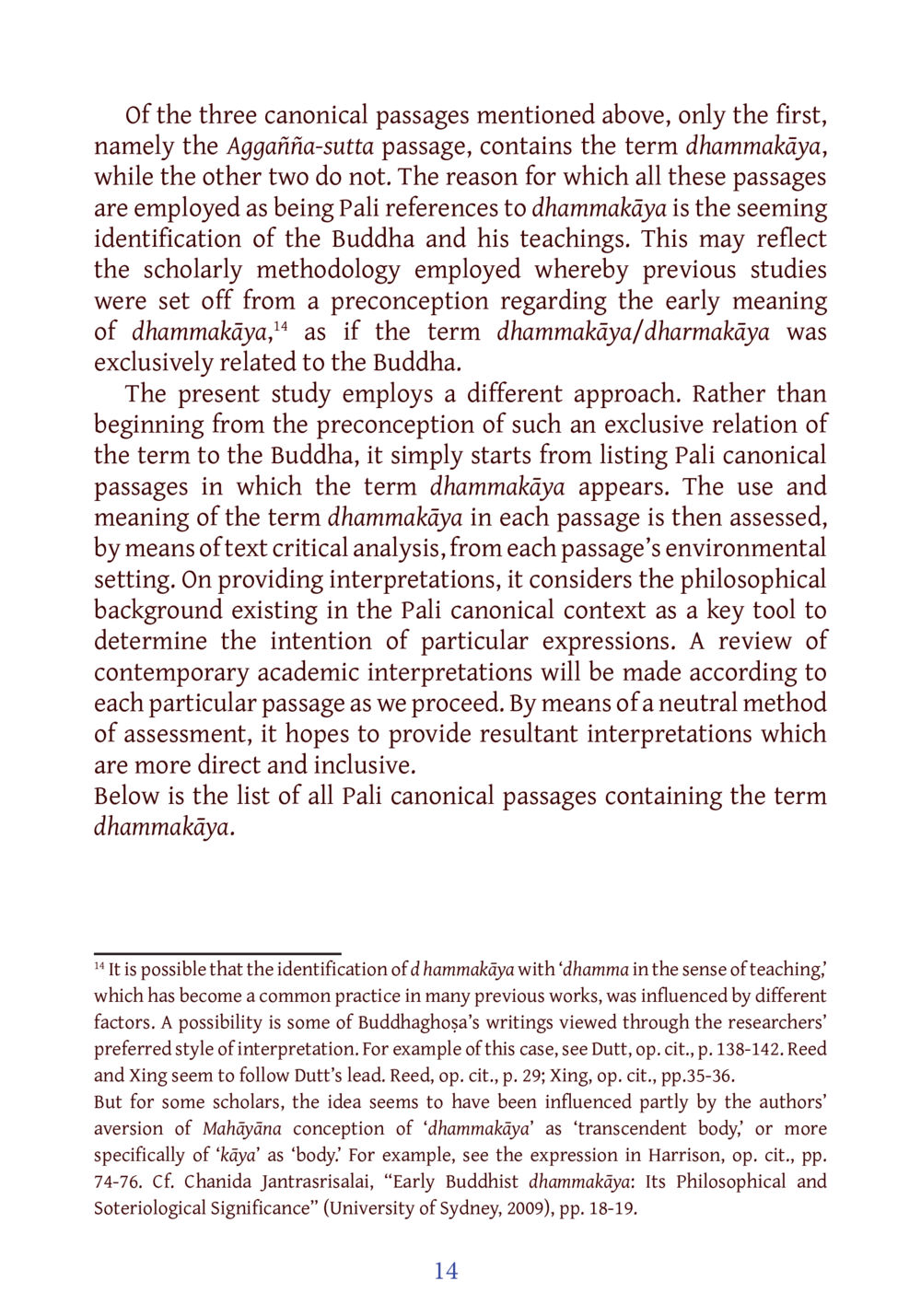Exploring the Concept of Dhammakāya in Pali Canonical Texts : หน้า 35/141
DIRI Journal : หน้า 35/141 This study offers a critical analysis of the term dhammakāya in various Pali passages, evaluating scholarly interpretations and the environmental context of each text.
53 ครั้ง

สรุปเนื้อหา
This study reexamines the term dhammakāya in specific Pali canonical passages, notably the Aggañña-sutta, contrasting it with previous scholarly interpretations that often exclusively link the term to Buddha. It outlines a neutral approach, presenting a list of passages and analyzing their meanings through a critical lens. By considering the philosophical backdrop and contextual settings, the research aims for more inclusive interpretations. Influences from previous research and the variance in interpretations regarding Mahāyāna perspectives are explored. The findings serve to broaden the understanding of dhammakāya beyond traditional confines, relying on academic discourse rather than preconceived notions. This inquiry highlights how interpretations of dhammakāya have evolved and the factors that have influenced these shifts in understanding, while referencing contemporary academic works for deeper insights. For more details, visit dmc.tv.
หัวข้อประเด็น
-dhammakāya concept
-Pali texts analysis
-Buddhist philosophy
-scholarly interpretations
-contextual analysis
ข้อความต้นฉบับในหน้า
หน้าหนังสือทั้งหมด













































































































































